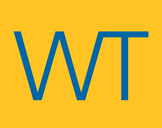PROVIDING WT’s MID-YEAR REVIEW OF CURRENT HOT TOPICS, KEY COST ELEMENTS AND TRENDS RELEVANT TO THE SINGAPORE CONSTRUCTION MARKET.
C-19 CONTINUES TO BE THE KEY ISSUE AS SINGAPORE’S CONSTRUCTION MARKET GAINS MOMENTUM. THE RECENT SPIKE IN COMMUNITY CASES & TIGHTENING OF RESTRICTIONS GIVES CAUSE FOR CONCERN, WHILE COUNTRIES THAT COMPRISE SINGAPORE’S SUPPLY CHAIN CONTINUE TO BE IMPACTED WITH CONSTRAINTS ON MOVEMENT OF LABOUR ACROSS INTERNATIONAL BORDERS AND HIGHER FREIGHT CHARGES.
MORE RECENTLY, PRICE RISES ACROSS A RANGE OF PRODUCTS INFLUENCED BY ELEVATED RAW MATERIAL COSTS AND GOVERNMENT POLICY CHANGES IN THE SUPPLY CHAIN CAN BE EXPECTED TO FLOW INTO HIGHER TENDER RETURNS. IN THE SHORT TO MEDIUM TERM THIS MAY ADD TO CURRENT UPSIDE PRICE PRESSURE AND POTENTIALLY PROVIDE RESISTANCE TO CONSTRUCTION PRICES MODERATING ONCE C-19 IMPACTS SUBSIDE.
CONSTRUCTION COST INCREASE FACTORS
Through 1H 2021, construction cost increases due to C-19 impacts have generally been consistent with WT’s projected average of 10% to 15% since Q1 2020 however, varying between sectors and with some significantly higher increases for certain types of project. At the beginning of 2021, based largely on expectations that the international community would be able to successfully ease C-19 impacts through the course of the year, we forecast that there may be opportunities for prices to stabilise or even to moderate by up to 5% by the end of this year.
However, with effective controls to C-19 being slower and the more recent emergence of other external economic factors, WT has updated our forecast for the 2nd half of 2021.
Singapore relies on a bespoke supply chain, with most construction labour and materials imported, the former that continues to be affected at the local source by C-19 restrictions on movement across international borders, and the latter by supply & demand factors, Government policy and significant increases to freight costs.
Highly effective control of C-19 (through containment and/or vaccination) is required before international borders can substantially reopen to provide an opportunity for the related price premiums (including elements of ‘risk’ due to the current uncertainty) to recede.
However, with little evidence of this opportunity emerging soon, per BCA ‘the current elevated manpower-related costs, as well as rising global material costs due to supply chain disruptions, are likely to continue to impact construction costs and tender prices in 2021’.
More recently price surges in raw materials, increased demand and some international policy changes are expected to feed into tenders during the second half of 2021.
In May 2021, the Chinese Government removed export tax rebates on a raft of steel products but last week intervened with reductions to major construction materials, including steel and aluminium, with the price for the former reducing by 5% overnight.
It is therefore considered material prices may be quite volatile but is trending higher. Should there be no relief from these higher pricing levels in the short to medium term, they will likely contribute to further upside price pressure that may limit how construction prices can moderate once C-19 impacts subside.
CURRENT KEY ISSUES TO WATCH
- LABOUR: Construction labour cost increases due to restrictions on workers coming into Singapore. Contractors are generally quoting the current labour supply to be about 30% below requirements which may be further intensified by recent India travel restrictions.
- FREIGHT: Increase in shipping cost, higher demand and price control, especially from China.
- MATERIALS: Increases to key raw materials such as concrete, granite, steel and copper have seen the most significant increases in 2021.
- SUPPLY PRESSURES: Demand for steel for international infrastructure plans, particularly in the US, causing pressure on supply costs.
At the time of publication, the above are the key risk factors that are likely to apply additional pressures to construction costs. the extent of which will vary across different sectors, project risk profile and contractor availability.
TENDER PRICE INDEX
The BCA Tender Price Index (TPI) for All Sectors is currently published up to the end of 2020, as extracted below for 2018-2020. This bulletin aims to be more contemporary and forward-looking than the TPI can be however, the upward trend in Q3 and Q4 is clear and it is noted that an index is generally slow to respond to real-time market changes (i.e. tenders received in late Q4 2020 will not be awarded and reported until 1H2021). While also recognising this is an average across all sectors, the 5.4% increase over the second half of 2020 is considered likely to be lagging the real increase in prices, an opinion that is supported by average tender price levels received on WT projects.
Source: BCA as of 15 February 2021
^The TPI sub-indices for 2Q20 (all categories) and 3Q20 (all except Public Residential) are assumed unchanged from 1Q20 given a lack of representative data due to insufficient tenders for new works awarded during this period
Cost escalation in the couple of years pre-Covid-19 can be seen to have been in the order of 1-2%pa, however, Q4 2020 shows a 6.3% year-on-year increase which compares with WT’s recorded tender returns in H2 2020, ranging between 10-15% higher on average for the same period. Given recent events, this trend of cost increase may continue and WT believes a further escalation allowance of 5-10% for the balance of 2021 would be more prudent at this stage.
WT ADVICE
Given the current factors referred to herein, our updated forecast for the 2 of 2021 is for construction costs to continue to be under upward pressure with a potential average increase of 5% to 10%, subject to project-specific variables.
Such individual project specifics should be considered when reviewing tender price forecasts including, but not limited to, sector, procurement, size, complexity, location and risk.
Equally, the volume of work and the amount of work in hand are important considerations for competitive tender price levels that will reflect market dynamics, workload, hotspots and realisable margins.
With current uncertainties in the local and international arenas, a more holistic view by experts that can better understand the complex mix of macro and microeconomic factors affecting pricing structures is relevant. It is currently a more complex landscape than usual to model future cost movements over the next period and it should be noted that the opinions in this bulletin are generic and offered for guidance purposes only.
Clients establishing business cases during this time should consider additional Industry-specific and independent construction cost consultancy advice to properly consider all such potential impacts and apply appropriate risk management strategies to suit their project profile.
DISCLAIMER
WT will not in any way be liable to any person or body for any cost, expense, loss, claim or damage of any nature arising in any way out of or in connection with the information, opinions or other representations, actual or implied, contained in or omitted from this bulletin or because of any reliance thereon by any person or body. This bulletin provides indictive market information as guidance only and is not business or investment advice for which seeking an independent professional opinion is recommended regarding appropriate construction costs and risk management allowances for each particular project. No representation or assurance is given that any indices, trends or market sentiments produced, used or referred to herein are accurate, without error or appropriate for use by persons.



